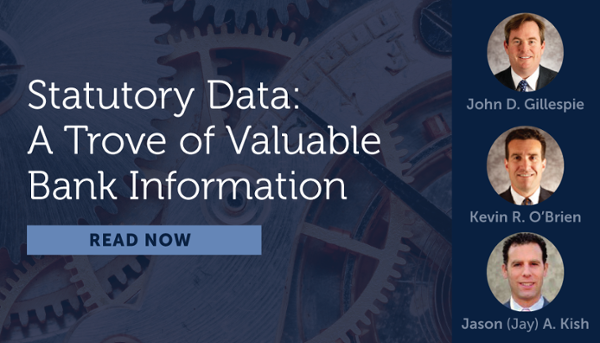We recently published a blog entitled Banks in 2008 Versus 2020: This Time Part of the Solution, in which we contrasted the role banks played in the Global Financial Crisis versus the COVID-19 pandemic. We view banks as part of the COVID solution, evidenced by facilitation of the PPP program. With improving clarity on loan losses, reserve levels, the potential for cost saves and capital management, we believe there is a strong case to be made for investors to continue warming up to bank stocks.
Update on Deferrals
As the crisis intensified, in an effort to help borrowers, banks granted loan payment deferrals to those impacted by COVID. Regulators allowed banks to grant deferrals without classifying the loan as non-performing or a troubled debt restructuring in 2020. Banks took full advantage of this policy and granted deferrals to practically any borrower who wanted one – deferrals for U.S. banks over $50 billion in assets totaled $352 billion or nearly 7% of loans on average (with some banks deferring 20-30% of their loan portfolio). Two types of borrowers took advantage of first round deferrals – the first being borrowers severely impacted by COVID who needed relief; the second group being borrowers who took deferrals as a precautionary measure in case the environment deteriorated further.
Today, the majority of first-round deferrals have expired, and banks are only granting second-round deferrals to customers still facing significant challenges. Thus, we view second-round deferrals as a good proxy for future non-performing asset formation. To our surprise, Q3 deferral updates improved better than expectations, with a low level of requests for additional deferrals.
Clarity on Loan Losses
We also now have greater clarity surrounding loan loss reserves. Going into the third quarter, analysts were calling for the large loss provisions taken in Q1 and Q2 to continue into the future. This would place pressure on bank earnings, lower capital levels, and compromise the ability to pay dividends. However, management teams believe the bulk of provisioning is complete and will meaningfully decelerate in Q3 and beyond.
The reason why banks have aggressively built loss reserves early this cycle is largely due to recent implementation of the Current Expected Credit Loss model (CECL). Prior to CECL, banks set aside capital for losses as they became apparent. Under CECL, banks are now required to reserve for expected losses on the day the loan is approved. CECL is also a dynamic model, meaning that as the economic outlook deteriorates, banks must set aside more capital for reserves – the opposite is true if the outlook improves. As the outlook deteriorated in March / April, banks were forced to drastically increase reserves to prepare for losses. Given the current and improved outlook, banks are cautiously optimistic they are well reserved for future losses under CECL.
Cost Savings
One positive development as a result of COVID, is that banks expect material cost-save opportunities. Given public health concerns, many customers are shunning in-person branch visits and adopting digital banking. Management teams believe this crisis has sped up the digital banking adoption process by multiple years. As a result, banks expect to accelerate the number of branch closures, which will drive cost saves. These savings partially offset the earnings headwind borne by a low interest rate environment (as low rates equate to pressure on net interest margins).
In an upcoming blog, we will discuss the increased bank M&A expectations for 2021 and the bottom-quintile valuations (price to tangible book value) which make banks look even more attractive for value investors. If you aren’t already subscribed to receive our insights, please fill out the form on this page to be notified when we release part 2 of this blog series on banks.


